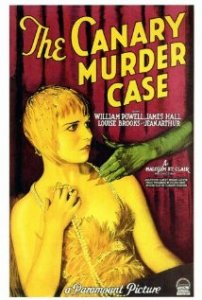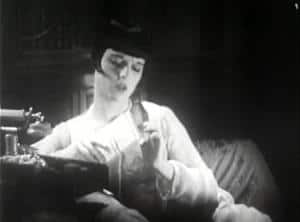Louise Books is one of the actresses were haven’t really touched on in our six years online, but perhaps today is the day to put that onus behind us. Sadly, we picked one of her weaker pictures, the Philo Vance introducing The Canary Murder Case, in which to do so.
The film is one of those few oddities which straddle the transition between silent and sound pictures. Like most, it suffers as a result. Though evidently a bit of a success at the time of release, the film is now known more as the film that ruined Brooks’ American career.
Like all of the studios, at the advent of sound Paramount was faced with a conundrum. They had several silents in the can which had not yet been released, The Canary Murder Case among them. Technically still an option, releasing any picture as a silent one even in this nascent introductory period for sound was commercial suicide. The opposite extreme was to junk the entire picture and admit the resources expended in making it were wasted. The third option- and the one Paramount opted for- was to rework the picture by adding dubbed sound where it could and shooting additional sound footage to make the project more viable in the marketplace.
Most of the cast was amenable to this, but not one of the presumed stars, Louise Brooks. Well documented elsewhere is the saga of what unfolds next, but suffice to say she gave Paramount the big shove-off. Her contract had run out and, as no raise for a new contract had been in the offering, she had taken up her career in Germany with G. W. Pabst. Her involvement in salvaging the silent only version the film and helping to transition it to sound were nil.
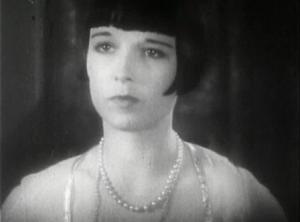 So Paramount hired another actress, Margaret Livingston, to dub Brooks’ few lines. It is unclear what Brooks’ role (as the Canary) looked like in the original version, but in the released product she is gone from the film after the first fifteen minutes or so. Though maliciously labeled later by the studio as having a voice ill-suited for sound pictures, Livingston dubbed voice is that of a spiteful and coarse Brooklyn woman. Surely better options existed, but perhaps again at this point it was part of a concerted effort to smash any hope of Brooks’ return to the states.
So Paramount hired another actress, Margaret Livingston, to dub Brooks’ few lines. It is unclear what Brooks’ role (as the Canary) looked like in the original version, but in the released product she is gone from the film after the first fifteen minutes or so. Though maliciously labeled later by the studio as having a voice ill-suited for sound pictures, Livingston dubbed voice is that of a spiteful and coarse Brooklyn woman. Surely better options existed, but perhaps again at this point it was part of a concerted effort to smash any hope of Brooks’ return to the states.
As weak a role as the Canary fares- she is obviously murdered early on to provide a plot- Jean Arthur’s role as the second female lead as the fiancé of one of the suspected murderers bears even little mentioning. She has only a scant few minutes of screen time at the beginning and end of the feature. So where does that leave out leading man, William Powell?
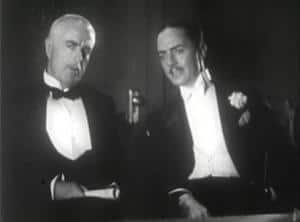 Powell always succeeded best in having a witty actress to bounce his lines off of, with the most notable example being The Thin Man series. With the female cast a true nonfactor, he is left to amble through mostly unengaging scenes with lots of rather meaningless dialogue which drives little audience engagement. His one scene of interest is one where he play poker with the suspects to determine the guilty party.
Powell always succeeded best in having a witty actress to bounce his lines off of, with the most notable example being The Thin Man series. With the female cast a true nonfactor, he is left to amble through mostly unengaging scenes with lots of rather meaningless dialogue which drives little audience engagement. His one scene of interest is one where he play poker with the suspects to determine the guilty party.
Though not among the top billed, Eugene Pallette (of later fame as Friar Tuck in The Adventures of Robin Hood) comes close to stealing the show as the police Sergeant leading the investigation. Even in this odd film he managed a few (presumably intentional) successful attempts at humor.
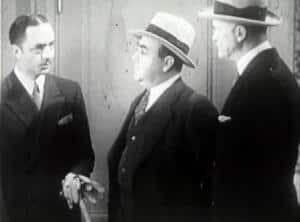 Unsurprisingly, the actors (Powell and Pallette included) suffer badly from what is obviously new technology for them all. Lines are spoken at an almost ponderous pace, and it appears that almost painful attention was paid to enunciation here. Like other similar pictures there are awkward gaps between lines in a conversation, giving the sound system time to capture all the dialogue properly. Also, there are few sound effects or any ambient sound, though that too is to be expected.
Unsurprisingly, the actors (Powell and Pallette included) suffer badly from what is obviously new technology for them all. Lines are spoken at an almost ponderous pace, and it appears that almost painful attention was paid to enunciation here. Like other similar pictures there are awkward gaps between lines in a conversation, giving the sound system time to capture all the dialogue properly. Also, there are few sound effects or any ambient sound, though that too is to be expected.
What is surprising is how disturbing the results are. We’ve come to expect this style in other period pictures but here the results are more painful in the waiting and so much less rewarding in the hearing. The obvious splicing of remnants of the original silent footage with the newly shot scenes doesn’t blend well.
Though, as mentioned above not long for the picture, the Canary is Louise Brooks. She is a stage star who makes some of her income from doing an aerial trapeze act. However, it looks like she makes a good portion of her income from blackmailing gentleman callers, most of whom are married. She’s also got her hooks into Jimmy Spottswoode (James Hall) as well. Only with him she is looking for marriage as he can give her social status, being the son of local celebrity Charles Spottswoode (Charles Lane).
Right after an evening where she calls in her chips (marriage proposals and blackmail threats) with her entire cabal, she is found murdered in her luxury hotel suite. Though it really is a fairly easy caper to deduce, I won’t share the murderer here. Suffice to say they all had motive, but one has a whole heck of a lot more. It is also hard to sympathize with the victim as she is portrayed so poorly to us.
With the Canary murdered the balance of the picture plods through interview after interview, each more boring than the last. With the longest 80 minute run time imaginable, the only highlights really are Eugene Pallette and Powell’s poker scene.
The Canary Murder Case is of interest only as one of cinema’s historical oddities or to those rabid completists of Louise Brooks’ work. Though some call this a ‘rare Lousie Brooks talkie,’ for at least this viewer it is better looked on as her last silent. Clearly a mish-mash of two different pictures and productions, it is hard to get too excited about repeated viewings of this one.
